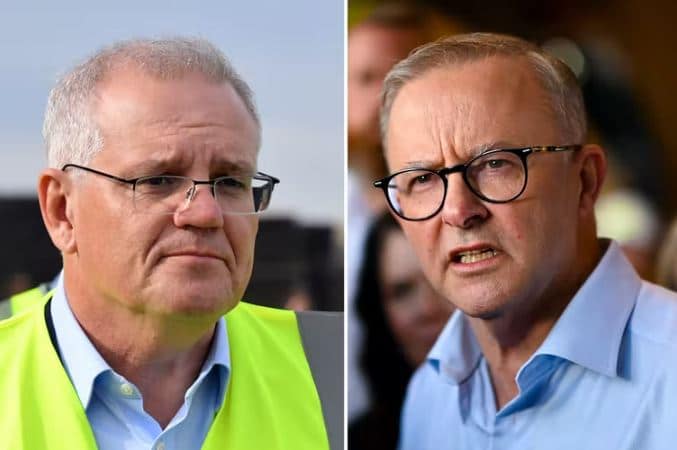In the first week of the campaign, we journeyed around the country with six politics experts to examine the key seats and issues affecting different parts of the Australia.
What has happened since? Which seats do you need to watch on election night? In the final week, our experts return to look at Queensland, Victoria, South Australia, Western Australia, Tasmania and New South Wales.
QUEENSLAND
Paul Williams, associate professor in politics and journalism, Griffith University
Election watchers increasingly remark that, despite the electorate’s volatility, campaigns today are making little difference to election outcomes.
During both the 2016 and 2019 campaigns (leaving aside the inaccuracy of the 2019 data), public opinion polls hardly moved. This campaign, too, has seen little change, with almost all polls consistently pointing to a modest Labor majority.
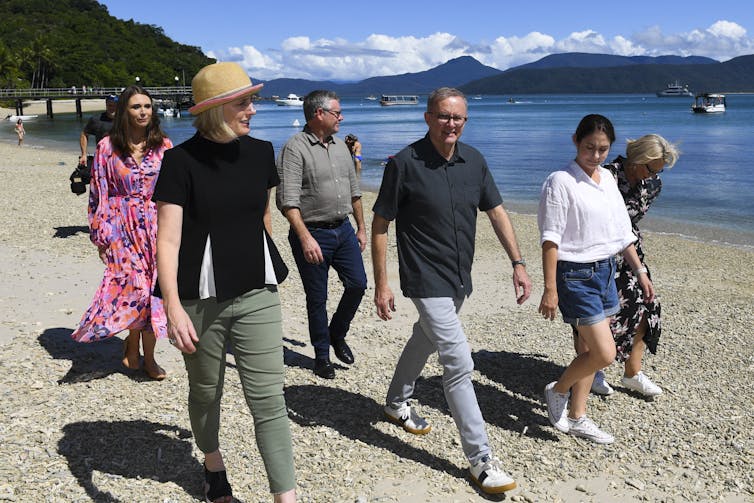
Perhaps former British Prime Minister Harold Wilson’s famous remark, “a week is a long time in politics” is now redundant. Voters now appear to make their vote choice well in advance of polling day.
That appears especially true in Queensland.
Sub-national opinion polling has been sparse this campaign, but a recent Roy Morgan survey found the Liberal National Party continues to lead Labor in Queensland on after-preference votes, 53.5% to 46.5%. While this still represents a swing of almost five percentage points to Labor since 2019, Queensland maintains its longer-term trend of being a wasteland for federal Labor. Only Tasmania boasts a stronger Coalition vote.
Labor knows the perils of Queensland well. That’s why leader Anthony Albanese launched his campaign in the far more fertile ground of Western Australia with the enormously popular Premier Mark McGowan, and not in Queensland where Annastacia Palaszczuk sits under an integrity cloud.
However, Albanese did spend the campaign’s crucial second week in the Sunshine State, seeking to repair the damage wrought by his earlier economic gaffes. In fact, he invested five whole days in the electorates of Hinkler, Leichhardt and Rankin. He also sandbagged the at-risk Griffth, and visited the must-win LNP seat of Brisbane.
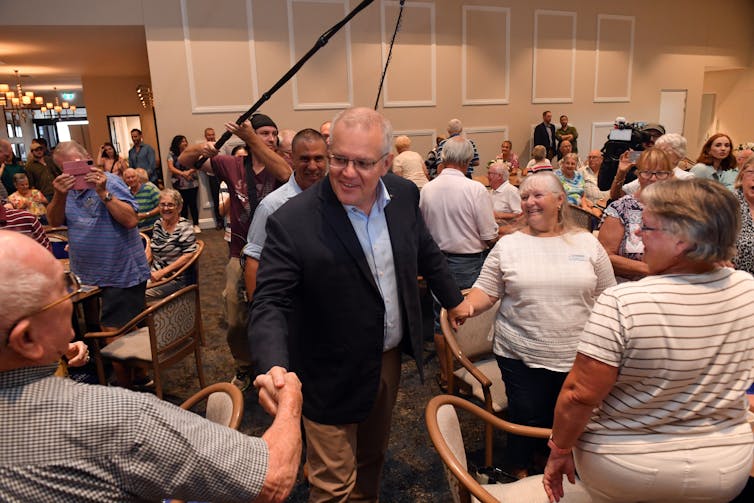
Prime Minister Scott Morrison soon followed with a visit to Longman – the LNP’s most marginal Queensland seat – before participating in the first leaders’ debate in Brisbane. The fact Nationals’ leader Barnaby Joyce also visited central Queensland suggests the Coalition fears losing support to both Pauline Hanson and Clive Palmer there.
Like other states, cost of living (including interest rate hikes) remains a tier one issue. But, unlike other states, Morrison is still seen as the stronger leader against Albanese, with whom regional Queenslanders simply cannot identify.
However, one development of the campaign is the likely surge in minor party support in Queensland. This won’t see anyone on the populist right, except Bob Katter, win in the lower house. But watch out for a Greens upset in at least one House of Representatives seat.
VICTORIA
Zareh Ghazarian, lecturer in politics, Monash University
When the campaign began, Victoria was unlikely to be the state that captured the national attention. This was partly due to the fact that the state had just two seats held by either party by 1% or less. However, as the campaign has gone on, some important electoral contests and tactics have garnered interest.
The so-called teal independents have become a prominent feature of the political debate in the state. In the inner metropolitan and traditionally safe Liberal seat of Goldstein, independent Zoe Daniel is well placed to cause an upset on election night. While incumbent Liberal MP Tim Wilson has been campaigning vigorously in the district, a recent poll showed both candidates have a primary vote of 33% each.
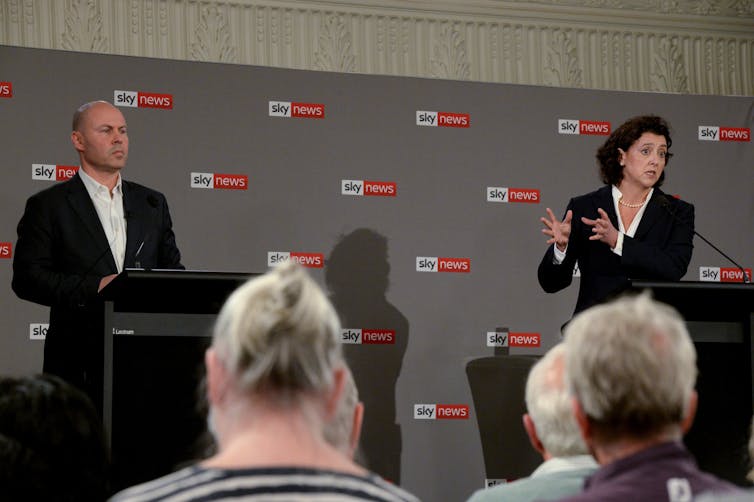
The trouble for the Liberal Party also extends to Kooyong, currently held by Treasurer Josh Frydenberg and being challenged by paediatric neurologist Monique Ryan. The Liberals’ Kooyong campaign appears to emphasise Frydenberg while downplaying the party and prime minister. As reports show, the campaign aims to “keep Josh”. Despite this, polling is suggesting significant support for Ryan, which makes Kooyong a key seat to watch on election night.
A loss in either seat would not only make the task of holding government more difficult for the Liberal Party, it would also deprive it of high profile MPs who would be expected to form the core of the party’s future leadership team.
These electoral problems for the Liberal Party are in addition to trying to maintain its most marginal seat of Chisholm (currently held by just 0.5%), while trying to win back Corangamite (currently held by Labor by just 1.1%).
SOUTH AUSTRALIA
Rob Manwaring, associate professor in politics and public policy, Flinders University
In South Australia, the focus remains on the key marginal seat of Boothby, which the Liberals currently hold on a margin of just 1.4%. In a sign of how prominent the seat is, ten candidates are running (an increase of two from 2019), and the seat is a critical three-way split between the two major parties and the prominent independent Jo Dyer.
Boothby is being showered with electoral promises compared to its neighbours. Labor has pledged at least $12.4 million to the seat including upgrades to various sporting and community club facilities. The Coalition has announced about $20 million for similar projects.
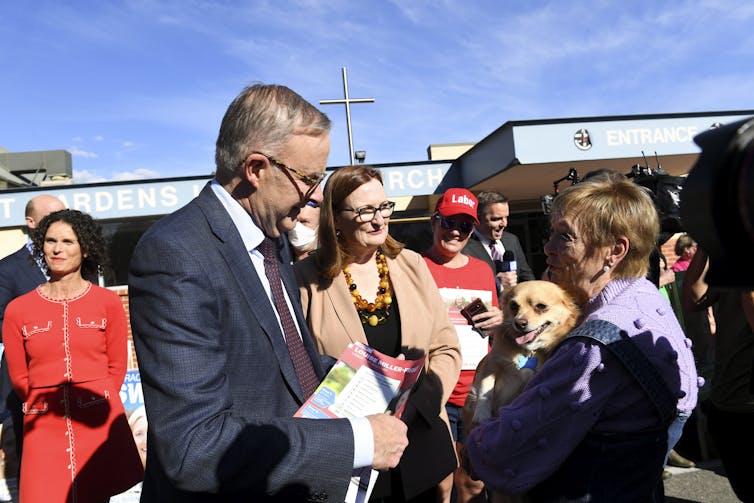
Federal Labor seems to want to capitalise on state Labor’s recent win through the focus on health, and Albanese visited the marginal seat to pledge $200 million in matched state funding to upgrade the Flinders Medical Centre. Questions were immediately raised about the “coincidence” the centre was in Boothby. It shows how marginal seat politics can undermine needs-based funding approaches.
But Boothby is not the only seat worth watching in South Australia. First, if Labor does pick up some final momentum, then Christopher Pyne’s old seat of Sturt is worth watching on election night, currently held by the Liberals with 6.9%.
Second, if the Liberals have an overall election loss, then the seat of Mayo (currently held by Centre Alliance’s Rebekha Sharkie on 5.1%) will be emblematic of its problems. First elected in 2016, Sharkie is an early version of the teal independents. If she cements her majority, it reflects the wider fragmentation of the centre-right.
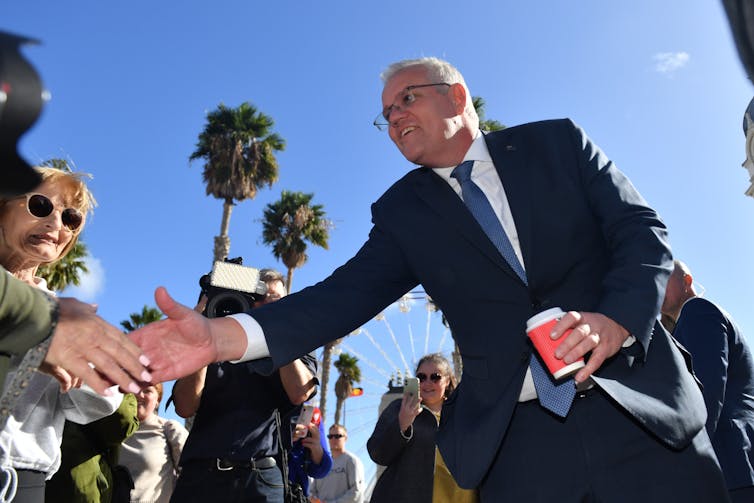
The third seat well worth looking at is the seat of Grey (currently held by the Liberals on 13.3%), where incumbent Liberal MP Rowan Ramsey is being challenged by independent Liz Habermann. She pushed the Liberals to a very tight finish at the state election in the neighbouring (state) seat of Flinders. The message here is marginal seat politics might dictate which seats get what, but it can leave behind frustration and a sense of neglect in other, seemingly safe seats.
WESTERN AUSTRALIA
John Phillimore, professor and executive director, John Curtin Institute of Public Policy, Curtin University
Western Australia’s status as a critical battleground in the federal election was confirmed when Labor chose to launch its campaign in Perth on May 1. This was the first time a major party campaign launch had been held in WA for at least 80 years.
Despite the admittedly large hiccup of both Albanese and McGowan contracting COVID just over a week before (ruining the chance to add a few days’ local campaigning), the launch went well. Labor luminaries such as Paul Keating and Kevin Rudd attended, and the event received blanket, and generally positive, local media coverage.
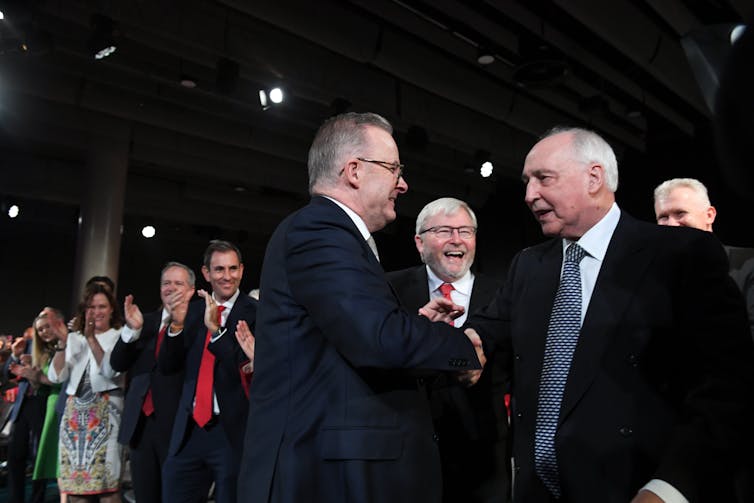
The Liberal Party has also showered a lot of attention on the state. Morrison has visited twice already since the election was called, and former prime minister John Howard was a prominent visitor as well, campaigning for Minister for Indigenous Australians Ken Wyatt in his marginal seat of Hasluck.
Both parties have been keen to remind voters in the west of past sins allegedly perpetrated by their opponents. Labor’s advertising (controlled by the WA branch, rather than national headquarters), focuses on Morrison’s disparaging remarks about WA’s supposed isolationism and his support in 2020 for Clive Palmer’s High Court challenge to the state’s border restrictions.
The Liberals are running advertisements reminding voters of Labor’s 2012 mining tax introduced by Rudd, and his closeness to Albanese.
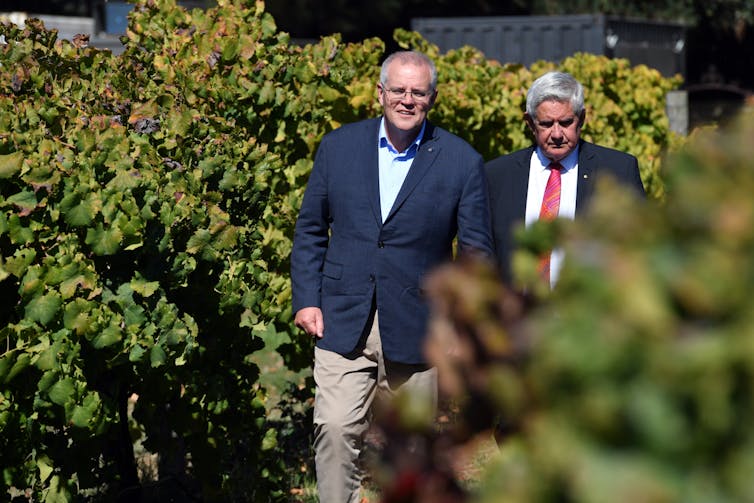
The Liberals have a “plan for WA” that includes significant investments in hydrogen, critical minerals, shipbuilding and defence, as well as a major cancer treatment facility. Labor’s showcase WA promise has been a $125 million promise to support the local manufacture of electric buses, as well as support for value-adding to resources including lithium and nickel.
Electorate-based promises – particularly in the marginal seats of Cowan, Hasluck, Pearce and Swan – have been coming thick and fast, with an array of announcements supporting local sporting clubs, cultural centres and local infrastructure.
The 3 big unknowns
There are three key unknowns as we head towards the finishing line. First is the seat of Curtin, where independent Kate Chaney is receiving plenty of attention and support in her battle to unseat the Liberals’ Celia Hammond. Despite pressure from the media and the Liberal Party, Chaney is refusing to say who she will support in the case of a hung parliament.
A second unknown is the impact of the state budget, which was handed down last Thursday. WA is the only government in Australia in surplus, and massively so ($5.7 billion in 2021-22), thanks to iron ore royalties and a GST deal negotiated with Morrison. McGowan was able to spread some financial cheer to voters in the shape of a $400 electricity credit for every household. But will that translate into more votes for Labor federally?
The third unknown is the impact of rising interest rates and inflation. Annual inflation in Perth was the highest of all the capital cities, at 7.6% (compared to 5.1% nationally). Three of the state’s most marginal seats, Cowan, Hasluck and Pearce, have a much higher share of households with mortgages than the national average of 35%.
The latest polling in WA shows Labor’s primary vote falling since the campaign began, but still enough to win Swan and Pearce. This suggests these classic “hip pocket” voters could well decide the federal election.
TASMANIA
Michael Lester, casual academic, University of Tasmania
Despite numerous visits by both major party leaders and hundreds of millions in spending commitments in the state, it may be that just one seat changes hands in Tasmania this election.
Given its small population and just five House of Representatives seats, Tasmania has received disproportionate attention from both the Coalition and Labor. But the marginal north-west seat of Braddon may be the only seat to change hands.
In the 2004 campaign, former Prime Minister John Howard’s pledged to allow old-growth logging to continue to protect jobs. This was credited with helping the Coalition win two seats in Tasmania and bolstering Coalition support nationally. In a similar move, Morrison has made a series of industry support funding announcements in Tasmania.
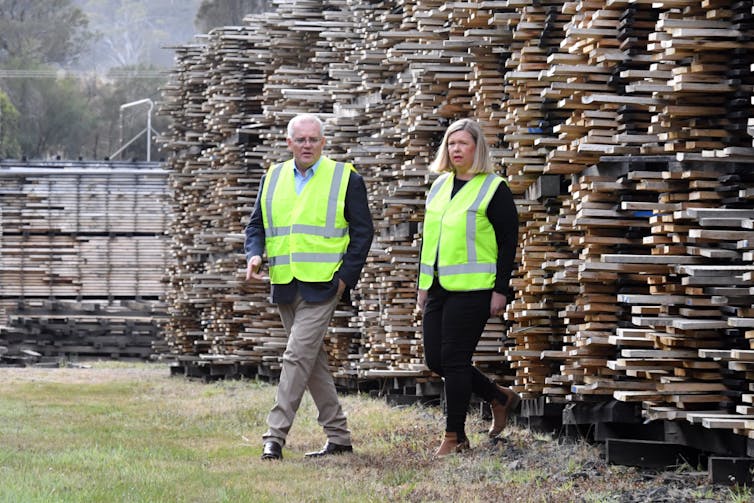
These include $100 million to create a national institute of forestry in Launceston as part of $219 million for the Australian forestry industry and $50 million towards the expansion of the Nyrstar zinc works near Hobart. The latter is seen as a major boost to the Tasmanian mining industry.
Meanwhile, Albanese has focused on infrastructure spending, such as $15 million for an aquatic centre in Launceston, in the seat of Bass. He has also promised $60 million to strengthen the Hobart Airport runway, which would allow it to carry heavier wide-bodied aircraft and benefit both the international tourism industry and agricultural exports. He also offered $5 million for a study for a $75 million federally-funded expansion of the industrial estate adjacent to Launceston airport. Both airports are in the marginal electorate of Lyons.
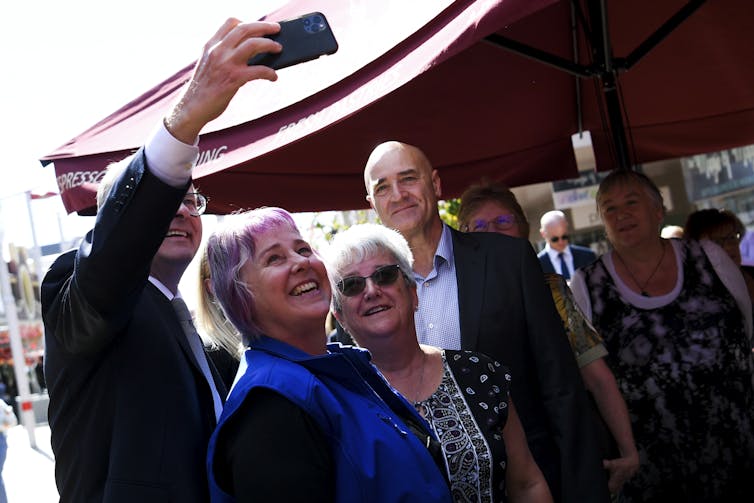
Such is the level of spending pledges, The Guardian’s “pork-o-meter” estimates Bass has received more than $550 million in pledges from the Liberal and Labor parties – and the pledges keep coming daily. This is the second-highest per-electorate spend for the Liberal Party (behind Canning in WA).
Neck and neck
Party insiders and commentators sense Labor’s Chris Lynch has drawn ahead of the Braddon incumbent, Liberal Gavin Pearce, who holds the seat on just 3.1%. Revelations of a 30-year-old drug conviction does not appear to have hurt Lynch, a vocational education teacher and youth worker. He is also expected to benefit from a decision by the Jacqui Lambie Network to preference him above the Liberals.
Labor fronbencher Julie Collins is tipped to retain her safe seat of Franklin (12.2%) while independent Andrew Wilkie (22.1%) is expected to easily hold off a challenge from Labor candidate Simon Clark. In Lyons, the Jacqui Lambie Network’s decision to preference sitting Labor member Brian Mitchell (5.2%) ahead of Liberal challenger Susie Bower should help him retain the seat.
No one is yet willing to call the ultra-marginal seat of Bass, held by maverick Liberal Bridget Archerby just 0.4%. She is up against the previous incumbent Labor’s Ross Hart. It should be noted that for almost 20 years the seat has changed hands at each election, and Bass and Braddon have been in lock-step – if one swings, so does the other.
In the Senate, the likely outcome is the return of Labor senators Anne Urquhart and Helen Polley and Liberal senators Jonathon Duniam and Wendy Askew, along with the Greens’ Peter Whish-Wilson.
Most pundits are tipping the Jacqui Lambie Network’s Tammy Tyrell – a former Lambie staffer – will take the sixth seat, though it is expected to be a three-way contest against the third Labor and Liberal candidates Kate Rainbird and Senator Eric Abetz respectively. The reasoning for this is that Labor will preference the Jacqui Lambie Network above other parties and independents, which boosts Tyrell’s chances. The question is whether personal support for Lambie will carry over to her candidate.
NEW SOUTH WALES
Mark Rolfe, honorary lecturer, School of Social Sciences, University of New South Wales
Both Morrison and Albanese have led lopsided campaigns relying on highly localised issues, negative campaigning, and vague generalities. This has overshadowed any substantial explanation of policies.
Nineteen of the top 20 renter-stressed electorates and nine of the top 20 mortgage-stressed electorates are in NSW. Curiously, neither leader jumped from the blocks touting wages and housing solutions. However, these (bleeding obvious) problems have became more prominent over the course of the campaign.
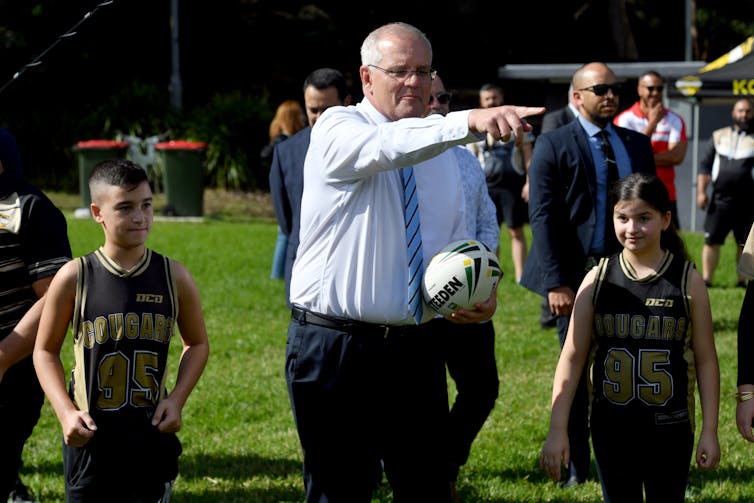
The Coalition is hoping its last-minute pledge to allow first home buyers to access up to 40% of their superannuation to a maximum of $50,000, will be a vote winner. Even though former Liberal Prime Minister Malcolm Turnbull previously described it as “the craziest idea I’ve heard”.
Curiously, Labor has said little of its proposed National Reconstruction Fund (aimed at rebuilding Australia’s industrial base) and nothing of its Buy Australian policy (which would legislate to get the government buying more goods and services here). Both would help its cause on wages.
Sometimes, Morrison has sounded like he is competing in a local election, with pledges like a $137,000 to upgrade a Country Women’s Association hall in Robertson. Mind you, in Dobell, Labor has promised $40,000 for new shade sails at the ocean baths at The Entrance.
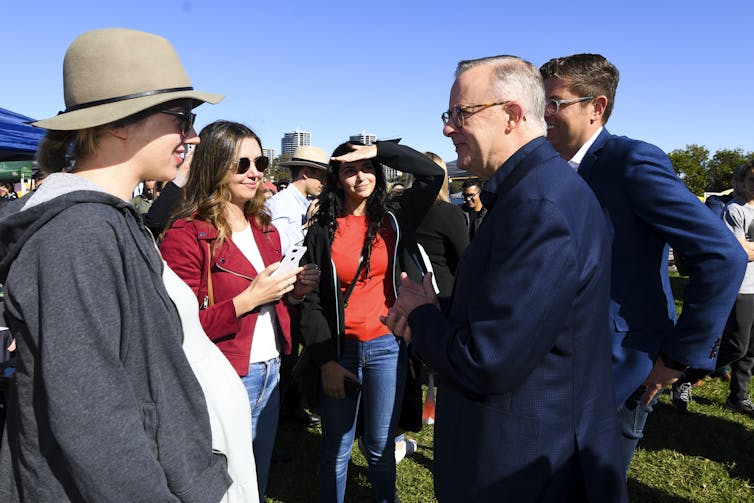
Morrison’s relentless energy has taken him to Macquarie (which includes the Blue Mountains), Parramatta in Sydney’s west, Dobell on the central coast and Gilmore on the south coast. But he has avoided fire-affected Eden-Monaro on the south coast and the flood-affected Richmond on the north coast. These seats are all in the top ten marginal Labor electorates where the Coalition need gains.
Albanese has campaigned across most of these seats as well as John Howard’s former seat of Bennelong, which Morrison has also visited but is behind according to polls.
The Liberals’ are also behind in the central coast’s Robertson. And are facing a tough contest in Reid, where Liberal MP Fiona Martin’s campaign has been marred by infighting and gaffes.
While Morrison has defended Liberal candidate Katherine Deves in his remarks, he has not campaigned for his controversial captain’s pick on the ground in Warringah.
Morrison has also avoided the Liberal seats of North Sydney, Warringah, Wentworth and Mackellar where teal independents are exciting local passions – using free concerts, rallies and thousands of volunteers. In the northern NSW seat of Cowper, the sitting National MP Pat Conaghan is also facing a teal challenge.
We can assume Morrison has bypassed these seats because he is not seen as a campaign asset for them. This could be due to community anger about the Liberal Party’s lack of action on climate change, or the Liberal party’s “woman problem”. Most women voted against the Liberals in 2019 and the party’s issues around gender have only has escalated since then. So, in the last dash before May 21, he is focusing his efforts elsewhere.
Paul Williams, Associate Professor, Griffith University, Griffith University; John Phillimore, Executive Director, John Curtin Institute of Public Policy, Curtin University; Mark Rolfe, Honorary lecturer, School of Social Sciences, UNSW Sydney; Michael Lester, Casual Academic, University of Tasmania; Rob Manwaring, Associate Professor, Politics and Public Policy, Flinders University, and Zareh Ghazarian, Senior Lecturer, School of Social Sciences, Monash University
This article is republished from The Conversation under a Creative Commons license. Read the original article.
Get all the latest Canberra news, sport, entertainment, lifestyle, competitions and more delivered straight to your inbox with the Canberra Daily Daily Newsletter. Sign up here.

